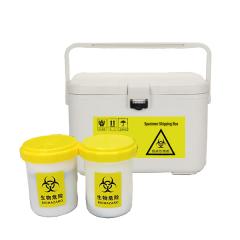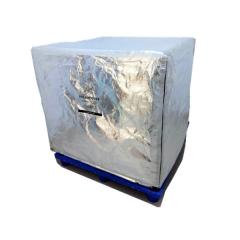In the intricate web of global commerce, where freshness and temperature sensitivity are paramount, the cold chain logistics industry stands as a beacon of innovation and resilience. This vital sector ensures that perishable goods, from farm-fresh produce to life-saving pharmaceuticals, traverse vast distances while maintaining their integrity and quality. Today, we delve into the fascinating current state of the cold chain, exploring its advancements, challenges, and the transformative role it plays in shaping the future of global trade.
The Evolutionary Leap
The cold chain has undergone a remarkable transformation in recent years, fueled by technological advancements and heightened consumer demands for freshness and sustainability. Smart sensors, Internet of Things (IoT) technology, and predictive analytics have revolutionized temperature monitoring and control, enabling real-time visibility into the condition of goods at every stage of the journey. This transparency not only minimizes waste but also enhances traceability, a crucial aspect in ensuring food safety and compliance with regulatory standards.
Sustainability in Focus
Amidst growing environmental concerns, the cold chain industry is increasingly embracing sustainable practices. This includes the adoption of energy-efficient equipment, such as solar-powered cooling units and insulation materials with lower carbon footprints. Additionally, circular economy models are being explored to reduce waste by repurposing or recycling packaging materials. Collaborations between governments, private sector players, and NGOs are fostering innovation in this space, aiming to create a more environmentally responsible cold chain ecosystem.
The Pandemic's Silver Lining
The COVID-19 pandemic, while posing unprecedented challenges to global supply chains, also underscored the critical importance of robust cold chain infrastructure. As the demand for essential goods like vaccines and medical supplies skyrocketed, the industry rose to the occasion, demonstrating its adaptability and resilience. This period saw accelerated investments in cold storage facilities, reinforcing cold chain networks, and enhancing logistical capabilities to ensure seamless distribution of life-saving resources.
Emerging Trends and Opportunities
As the world continues to embrace e-commerce and the gig economy, the cold chain is evolving to cater to these new consumer behaviors. Last-mile delivery solutions, utilizing insulated packaging and rapid delivery systems, are becoming more prevalent, ensuring that perishable items arrive at customers' doorsteps in pristine condition. Moreover, the rise of specialized cold chain providers focused on niche markets, such as organic produce or temperature-sensitive pharmaceuticals, is creating new avenues for growth and differentiation.
Conclusion
The cold chain logistics industry stands at the cusp of exciting developments, driven by technological innovation, sustainability imperatives, and shifting consumer preferences. As the world becomes more interconnected and demand for perishable goods continues to soar, the sector's ability to adapt, innovate, and ensure seamless, efficient, and environmentally responsible distribution will be paramount. The journey ahead may be fraught with challenges, but the promise of a more resilient, sustainable, and technologically advanced cold chain holds immense potential for shaping the future of global trade.

 한국의
한국의  English
English français
français русский
русский italiano
italiano español
español português
português العربية
العربية 日本語
日本語 magyar
magyar










